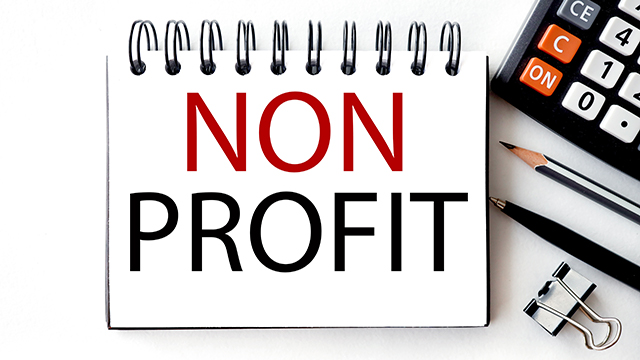IRS Issues Final SILO Regulations for Nonprofits
By Magdalena M. Czerniawski | January 29, 2021
At the end of November 2020, the IRS issued final regulations on Unrelated Business Taxable Income (UBTI). These much-anticipated regulations relate to IRC section 512(a)(6), which was enacted as part of the Tax Cuts and Jobs Act of 2017 (TCJA). By enacting this code section, the TCJA imposed a 21% tax on each separate line of business which has been in effect for taxable years beginning after December 31, 2017. There are many interesting discussions and comments in the 135-page final regulations. Only the most significant ones are discussed below.
Since enacting IRC 512(a)(6), the IRS first issued Notice 2018-67, then proposed regulations in April 2020 and now has issued these final regulations, called “SILO” rules as they relate to separating various trade or business income activities for nonprofits.
The final regulations are expanded and updated from the prior notices and proposed regulations issued by the IRS and provide guidance on how exempt organizations that are subject to UBTI should properly report it. They also define an “unrelated trade or business” and how it applies to individual retirement accounts, as well as provide guidance on the inclusion of “subpart F income” and “global intangible low-taxed income.”
Interestingly enough, the IRS received only 17 comments to the proposed regulations issued in April 2020, some of which were incorporated into the final regulations. The final regulations are consistent with the initial Notice 2018-67 and the proposed regulations. They provide that an exempt organization with one or more trades or businesses must compute UBTI separately with respect to each unrelated line of business, and without regard to the specific $1,000 deduction including for purposes of any Net Operating Loss (NOL) deduction.
NAICS Codes
One of the major changes from the proposed regulations is the use of NAICS codes. Under the Notice and proposed regulations, all six digits are included in the codes. Under the final regulations, however, only the first two digits are used. With this change, exempt organizations are spared the burden of identifying multiple lines of business; using the two digits allows organizations to identify only 20 separate lines of business instead of more than 1,000 if six codes were used. The IRS also clarified that using facts and circumstances to determine separate lines of business is not a valid test and would provide far less certainty than using the NAICS codes.
Before an exempt organization identifies separate lines of business, it must first determine whether it has a trade or business activity that is regularly carried on within the meaning of code sections 511 through 514. Unless an organization falls into any of the exceptions in sections 512 or 513 (such as passive income or sponsorship payments), any gross income is includable in the calculation of UBTI if: (1) it is income from a trade or business; (2) such trade or business is regularly carried on by the organization; and (3) the conduct of such trade or business is not substantially related (other than through the production of funds) to the organization’s performance of its exempt functions. Once the exempt organization determines that it does in fact have UBTI, then it has to use the 512(a)(6) “SILO” code section to separate them using the two-digit NAICS codes.
Qualified Partnership Interest
The final regulations include a second change from Notice 2018-67 and the proposed regulations regarding investment activities. The final regulations conclude that an organization holding investment in Qualified Partnership Interest (QPI) can aggregate income from lower tiered partnerships if it meets certain criteria. Additionally, the regulations permit aggregating any QPI with all other QPIs. This also helps tax-exempt organizations by sparing them the burden of trying to collect all that information from third parties.
The proposed regulations identified a partnership interest as QPI if it satisfied either the de minimis test or the control test. The final regulations follow the proposed regulations and provide that a partnership interest is a QPI that meets the requirements of the de minimis test if the exempt organization holds directly or indirectly no more than two percent of the profit interest and no more than two percent of the capital interest. However, the final regulations changed the name of the second test from “control test” to “participation test.” The proposed regulations provided that a partnership interest is a QPI that meets the requirements of the control test if the exempt organization (i) directly held no more than 20 percent of the capital interest; and (ii) did not have control over the partnership.
Renaming this test “participation test” in the final regulations makes sense and provides some more clarity. However, the test itself has not changed. Accordingly, the final regulations retain the 20 percent capital interest threshold provided by the proposed regulations but clarify that the exempt organization must meet the percentage interest requirement for the exempt organization’s taxable year with which or in which the partnership’s taxable year ends. The final regulations also clarify that an organization can take the average of the interest during the year to determine the percentage interest held. Organizations can rely on the partnership’s Schedule K-1 (the IRS tax form issued annually for an investment in a partnership) to determine this percentage.
Other Provisions
The final regulations have expanded the look through rule. Under this rule, organizations that control a partnership but do not control the lower tired partnerships can in fact combine the lower tired partnerships if they qualify as QPIs as discussed above. This is also a great change for exempt organizations since separating the lower tired partnership would be an extreme burden and would not serve much of a purpose for application of the SILO rules.
The final regulations also go through the details on allocation of expenses when an organization has more than one line of business. The regulations clarify that the expenses need to be directly connected to the activity and allocated on a reasonable basis standard (the lowest standard for any position that can be taken on a tax return). If the expenses are used for both an exempt and non-exempt purpose, they must be allocated between the two using the reasonable basis standard.
It is also important to note that the final regulations have been revised to clarify the calculation of the charitable contribution deduction, which must be based on the total UBTI of an exempt organization and not on separate lines of trade or business. Therefore, an organization must first compute UBTI under the SILO rules and then apply the 10% deduction for corporations to the sum of all UBTI.
Not surprisingly, the final regulations discuss NOLs. The final regulations are consistent with the prior guidance and allow maximum utilization of NOLs. Tax-exempt organizations can use the pre-2018 NOLs on total UBTI before deducting any post-2017 NOLs on separate lines of business.
Please contact your Marks Paneth advisor for more information on any of the issues raised in this article.
Click here to continue to read Nonprofit & Government Times, January 2021.
About Magdalena M. Czerniawski
Magdalena M. Czerniawski, CPA, MBA, is a Partner at Marks Paneth LLP and a member of the firm’s Nonprofit, Government & Healthcare Group. With over 15 years of nonprofit industry experience, she provides tax services to a wide array of nonprofits, including charitable organizations, schools, social welfare organizations, affordable housing entities, professional associations, private foundations, healthcare organizations and hospitals. In addition to providing tax compliance services, Ms. Czerniawski also provides tax planning and advisory services.... READ MORE +




